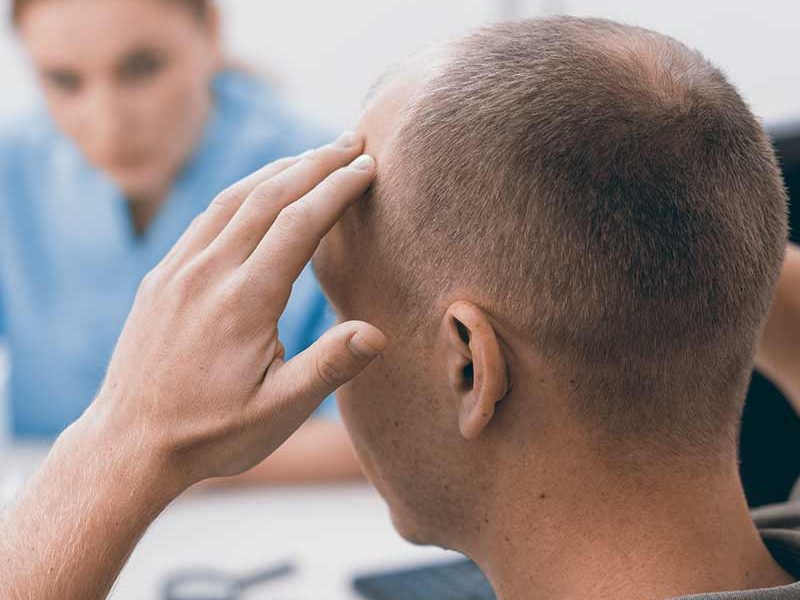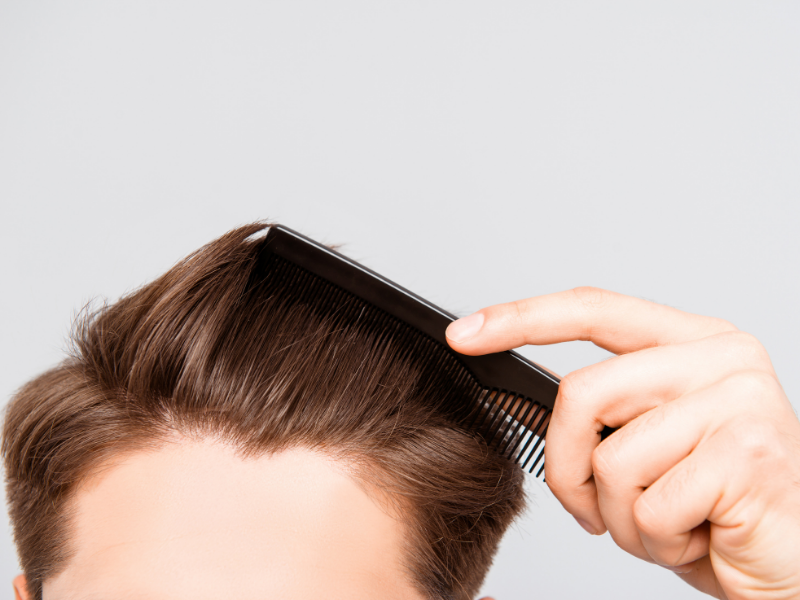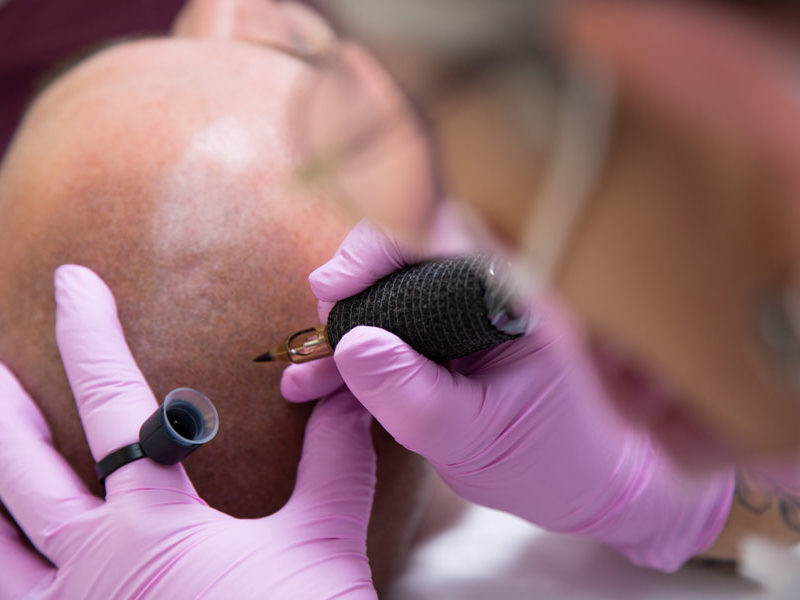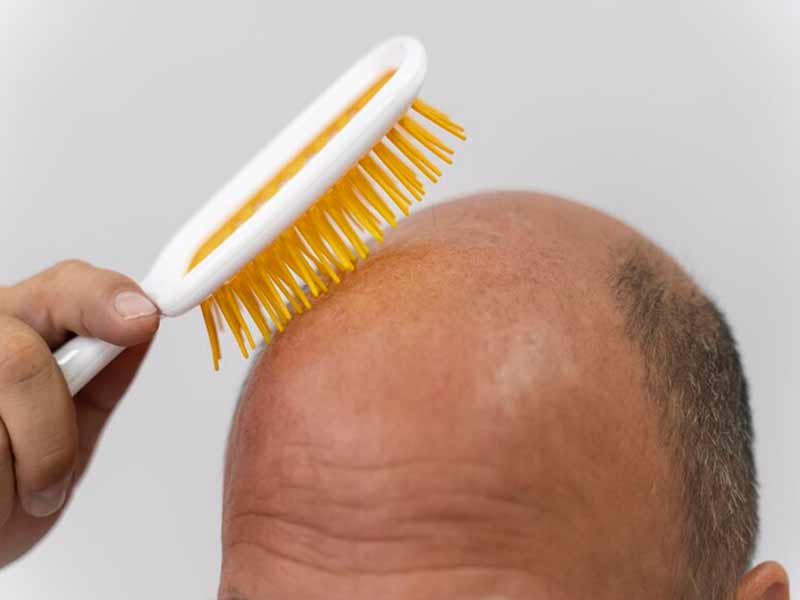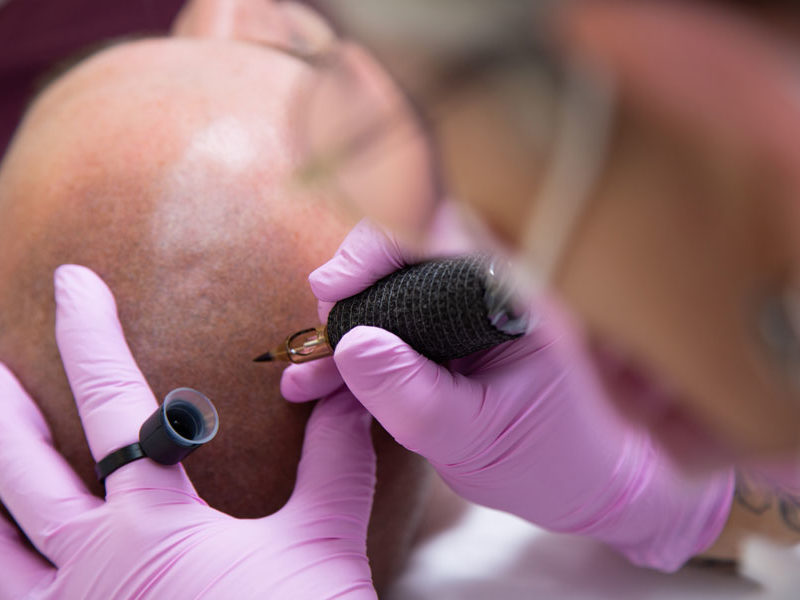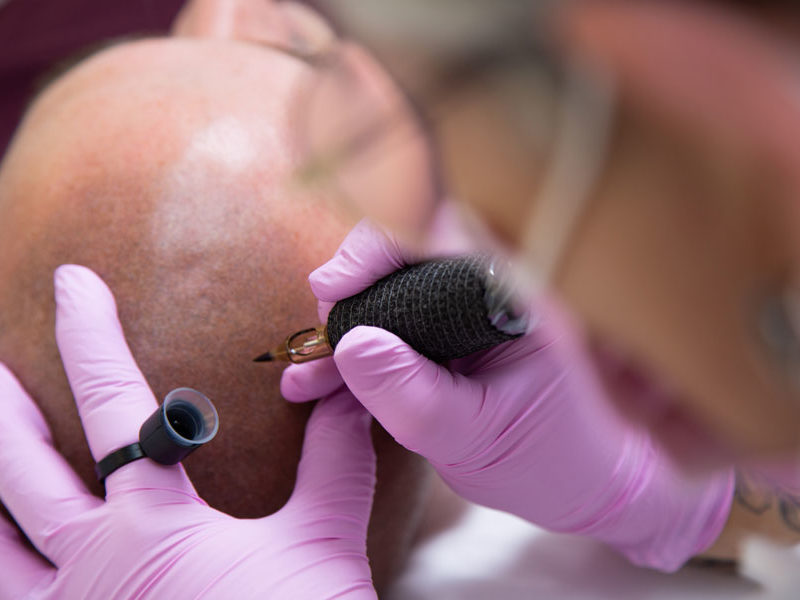
A bald head tattoo, also known as a scalp micropigmentation, is a cosmetic tattooing technique that involves applying small, dot-like pigments to the scalp to give the appearance of a fuller head of hair. This technique is designed to mimic the look of short hair stubble, and is often used by people who are balding or have thinning hair.
Bald head tattoos are performed by a trained and licensed cosmetic tattoo artist, who uses a special machine to implant pigments into the skin. The pigments used are typically made from iron oxide and are designed to be long-lasting and fade-resistant. The size, shape, and color of the dots are carefully chosen to match the color and thickness of the client’s natural hair, and to create the desired look.
Benefits
One of the key benefits of bald head tattoos is that they offer a quick and non-invasive solution for hair loss. Unlike traditional hair transplants, which can take several hours and require recovery time, bald head tattoos can be completed in just a few hours and do not require any recovery time.
8 Things To Know About Scalp Micropigmentation
They are low maintenance and long-lasting
Another advantage of bald head tattoos is that they are low maintenance and long-lasting. Unlike traditional hair pieces or wigs, which require regular maintenance and can easily be damaged or lost, bald head tattoos are a permanent solution that requires very little upkeep. The pigments are designed to last for several years, and may require touch-ups over time to maintain the desired look.
Bald head tattoos are also an excellent option for people who are not good candidates for hair transplants or other hair restoration procedures. People with scarring, thinning, or patchy hair may not be able to achieve the desired results with traditional hair restoration techniques, but can often achieve a natural-looking result with a bald head tattoo.
Enjoy a Youthful Appearance
Regardless of your age, people may assume you are older if you start balding. This can affect your self-image and sociality. Getting SMP treatment helps you regain your receded hairline. You can also alter it to be as perfect as you want to bring a youthful appearance.
The Results Are Semi-Permanent
When looking for solutions to balding, most people gravitate towards options with permanent results. SMP is practically permanent since the results last years after you complete treatment. Some scalp micropigmentation clients may experience light fading after 4 to 6 years, but you can solve this with a simple touchup.
In conclusion, a bald head tattoo is a cosmetic tattooing technique that can provide a quick and effective solution for hair loss. With the ability to achieve a natural-looking result in just a few hours, and with low maintenance and long-lasting results, bald head tattoos are an excellent option for people looking for a hair restoration solution.


